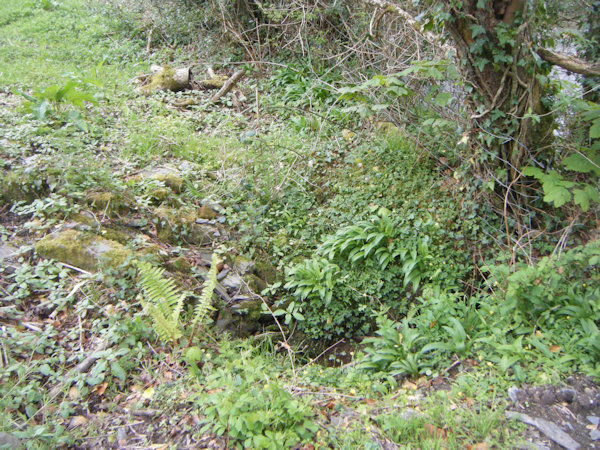 |
Dedication: Saint Gwyndaf Location: Felin Wnda Coordinates: 52.09543N, -4.44822W Grid reference: SN323469 Heritage designation: none |
HOME - WALES - CARDIGANSHIRE
 |
Dedication: Saint Gwyndaf Location: Felin Wnda Coordinates: 52.09543N, -4.44822W Grid reference: SN323469 Heritage designation: none |
St Gwyndaf, the son of Emyr Llydaw, King of Brittany, travelled to Wales in the 6th century. In addition to founding multiple churches in this part of the country, he is said to have held a senior position at St Illtyd's famous monastery in Llantwit, where St David himself was educated. He appears to have had a particular connection to Felin Wnda, where there seems to have been an extremely localised cult of St Gwyndaf; there can be no doubt that he once passed through the area. It is certain that there was once a medieval chapel, dedicated to the saint, located somewhere here, but its true location is disputed. According to Sabine Baring Gould, this chapel was located on the site of the Rectory, which would place it on the other side of the river to Ffynnon Capel Gwnda; however, the existence of a farm called "Cappel Gwnda" on the hillside above the well suggests that the chapel was truly located on the northern side of the river. Indeed, Ffynnon Capel Gwnda was clearly the well of the chapel, probably used for baptisms and other religious purposes (the phenomenon of small chapels having their own wells is very common in Scotland), so the chapel must have been located within the vicinity of the spring. Interestingly, the well and chapel were not the only places in Felin Wnda linked to the saint's cult: in his Lives of the Saints, Baring Gould also mentioned a local tradition regarding a rock in the riverbed:
|
It stood on the banks of the Ceri, where now is the Rectory. In the bed of the river there is a rock with a flat surface in which are holes, visible in summer, said to have been made by Gwyndaf's knees whilst engaged in prayer when once journeying through the country. From these holes was derived a medicine for wounds and sores, which effected a cure for the people of this parish only, who used to bathe their feet etc. in them. |
Very little is known about the well itself, apart from its name. Edward Lhuyd, in or around the year 1699, mentioned, in his description of Troedyraur parish (this parish is situated on the south side of the river; Penbryn is located on the northern side), "Capel gwnda: a place famous for curing of warts". Francis Jones, in The Holy Wells of Wales (1954), assumed that Lhuyd was referring to Ffynnon Capel Gwnda, as does the Historic Environment Record. However, Ffynnon Capel Gwnda is actually located within Penbryn parish, and it seems more likely that Lhuyd was referring to the rock in the river that was described by Baring Gould.
In 2011, the well was visited as part of the Cadw Holy Wells Project, but they were unsuccessful in locating the site, and assumed that the dry gully that runs next to Pont Wnda was the site of the spring. When I visited Ffynnon Capel Gwnda in the April of 2025, the well was easily seen from the bridge. It was producing a considerable amount of water, which issued beneath the roots of a tree into the river, and appeared to be in relatively good condition. There were also visible traces of what could once have been a stone structure, although these may just be from the nearby pile of assorted rubble. Despite the fact that the well is not marked on modern Ordnance Survey maps, historic maps show the well, with a path leading to it from the roadside.
|
Access: The well is located on private land, but can be seen from the bridge. |
Copyright 2025 britishholywells.co.uk